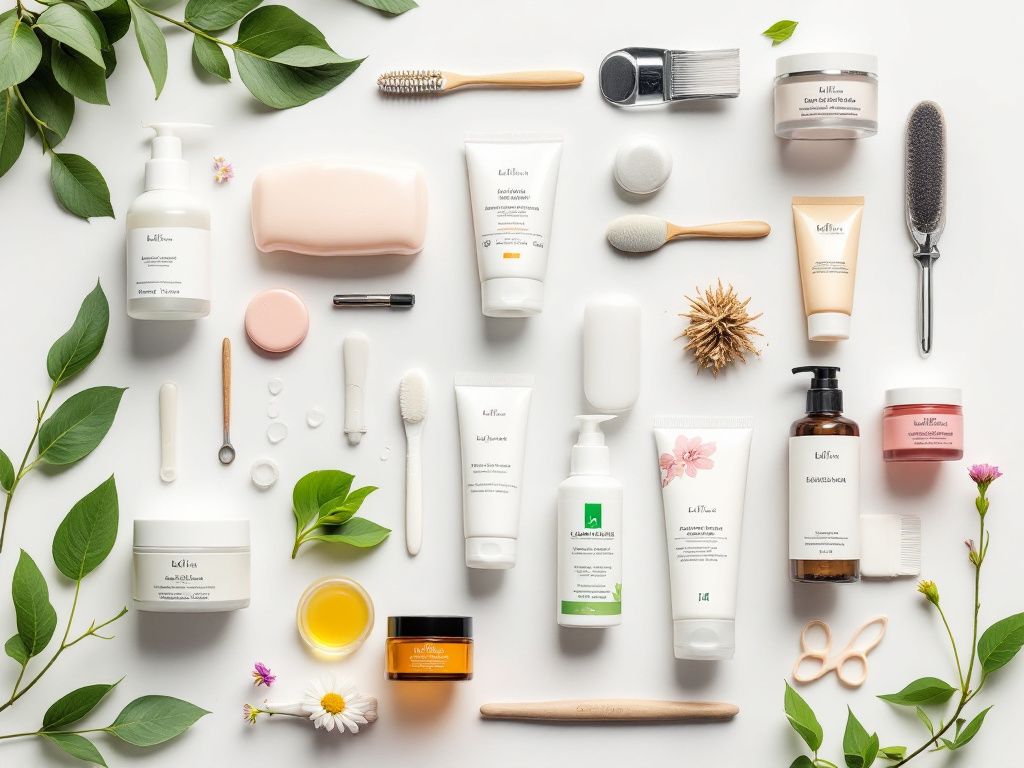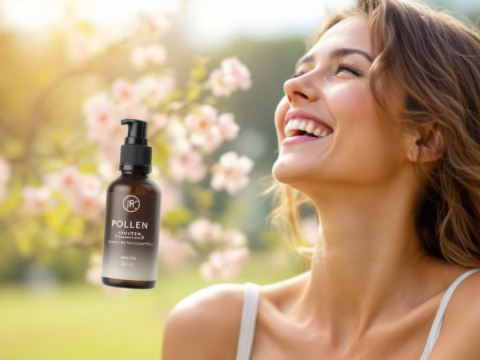Introduction
Ever felt like your morning skincare routine is more like a mini-marathon? You’re definitely not alone! Many of us go through the day feeling like we’re still on a quest for that perfect, glowing skin. It turns out, it all starts with nailing down the right facial day skin treatment routine. Here’s the deal: Having a good skincare regimen isn’t just about looking good—it’s about feeling your best. Stick with me as we navigate this journey to fabulous skin together, sans the stress.
Why Facial Day Skin Care is Essential
Before diving headfirst into facial treatments, let’s tackle why they matter. The daily grind can wreak havoc on your skin—all that pollution, stress, and sometimes questionable diet choices (hello, late-night snack attack!). These factors can leave your skin looking dull and tired. It’s here that an effective skin treatment routine can save the day.
Trust me, consistent care keeps your skin in its best form, helping combat the signs of aging, redness, or even those unwanted breakouts. Plus, it gives you a few minutes each day to focus on self-care, which is a win in itself.
Designing Your Morning Skin Treatment Routine
Alright, rolling up our sleeves now. Building a morning skin treatment routine isn’t rocket science, but it does require a bit of thought and commitment. Consider it your skin’s breakfast—a crucial start to the day. Here’s a step-by-step guide to help you build a routine that’s straightforward yet incredibly effective.
Step 1: Get that Clean Slate

First things first, we cleanse. Overnight, your skin has gathered oils, sweat, and other residues, even if you stayed inside all day binge-watching your favorite shows. A gentle cleanser sets the stage brilliant—removing impurities without stripping your skin of its natural oils.
*Recommendations:* Look for sulfate-free options to maintain the skin’s pH balance. Products like micellar water or gel-based cleansers can work wonders, especially if you have sensitive or dry skin.
Step 2: Tone it Up
You’d be surprised how often folks skip toner, deeming it unnecessary. However, toning is essential because it helps refine and tighten pores, adjusting your skin’s pH after cleansing. Think of it as laying down the track for the train, leveling everything out.
*Fun Tidbit:* If you’re dealing with specific issues like acne or redness, find a toner that targets those problems. Witch hazel or rose water-based toners are great versatile choices for almost any skin type.
Step 3: Serum Is Your Secret Weapon
Enter serums, the goldmine of skincare. These bad boys are light yet packed with active ingredients—think hyaluronic acid for moisture or vitamin C for brightening. They’re the problem solvers of your routine.
Here’s a breakdown of popular serums and their benefits in a cheeky little table:
| Serum Active Ingredient | Benefits | Ideal For |
|---|---|---|
| Vitamin C | Brightening, firming | Dullness, pigmentation issues |
| Hyaluronic Acid | Moisturizing | Dryness and dehydration |
| Niacinamide | Reduces redness, sebum | Acne-prone or oily skin |
| Retinol | Anti-aging | Fine lines, wrinkles |
Step 4: Moisturize, Moisturize, Moisturize
Do not, I repeat, do not skip your moisturizer. Whether your skin feels greasy or dry as the Sahara desert, this step locks in everything you’ve layered on so far, keeping your skin hydrated throughout the day.

*Quick Tip:* For extremely greasy skin, opt for a gel formula. Combination or dry skin types can benefit from creamier blends.
Step 5: Shield with Sunscreen
The final flourish! Sunscreen is crucial—yes, even when it’s cloudy. UVA and UVB rays don’t care about the weather. Protection from these rays prevents premature aging and skin cancer.
*Key Takeaway:* You want a broad-spectrum sunscreen with at least SPF 30. This means you’re protected against a wider range of potentially harmful rays.
Navigating Professional Care
While a DIY skincare routine can make a huge difference, don’t overlook the benefits of professional skin treatments for that occasional pick-me-up. Facials are not just about lounging in a plush robe—they can offer deeper exfoliation, rejuvenation, and treatment-targeted care that’s hard to replicate at home.
Types of Professional Care
- Classic Facial: Ah, the good old classic. This type usually includes cleansing, exfoliation, a gentle steam, blackhead extractions, massage, and a mask tailored for your skin type.
- Microdermabrasion: If you’re looking to tackle fine lines and surface-level scarring, microdermabrasion sloughs off that upper layer of dead skin. It sounds harsher than it is and can leave your skin glowing right away.
- Chemical Peels: These vary from mild to intense and help with deeper skin issues like sun damage or deeper wrinkles. Consult with your skincare professional to see what strength works best for you.
DIY vs. Professional Care: A Little Chat

Is professional care a must-have? Not always, but it’s a fantastic way to boost your regular routine. DIY treatments at home are wonderful and accessible, but there’s a reason professionals hang their license on the wall. If you’ve got the time and budget, slip in professional treatments when you can, but your daily routine is your best first line of defense.
Common Mistakes in Skin Treatment
It’s easy to go astray—here are some common missteps to avoid:
- Using Products That Don’t Match Your Skin Type: Selecting a product on someone else’s recommendation might not always work for your skin. Know your skin type and choose accordingly.
- Over-Exfoliation: Yes, exfoliating is mystical, but more often isn’t better. Excessive scrubbing can harm your skin’s natural barrier.
- Skipping Sun Protection: We’ve said this before, and it’s worth repeating. Protect your skin from sun exposure every day.
- Neglecting Your Neck and Chest: They’re part of the picture too! Make sure these areas get some of your skincare love.
Revisiting and Adjusting Your Routine
And finally, don’t shy away from tweaking your routine as your skin changes. Seasonal changes, diet shifts, or even age can alter your skin’s needs. Stay intuitive and listen to what your skin is telling you. You’ll occasionally need heavier formulas in the winter, or lighter, oil-free options for summer days.
Sticking to a routine yet staying flexible will bring you the satisfaction of witnessing the transformation into healthier, glowing skin. In practice, the ultimate skin treatment routine doesn’t need to be fussy—the key is consistency. Stick with it, and watch your skin go from “just there” to “wow” in no time.
Remember, everyone’s skin journey is personal. Don’t stress over perfection; celebrate progress instead. Whether you’re a beginner or a seasoned skincare veteran, consistency will have you basking in your skin’s new radiance soon enough! Let’s glow together.
Frequently Asked Questions About Skin Treatment
How Do I Determine My Skin Type?
Determining your skin type is crucial for selecting the right skincare products and routines. The most common skin types are oily, dry, and combination skin. Oily skin is characterized by a shiny appearance and can be caused by stress, humidity, genetics, or hormones. Dry skin is often weather-induced, leading to red or flushed skin and dryness. Combination skin is a mix of both oily and dry skin. Understanding your skin type helps in choosing the appropriate cleansers, moisturizers, and other skincare products[1][3].
How Do I Create a Skincare Routine Based on My Skin Type?
Creating a skincare routine depends on your skin type. For oily skin, use an oil-free and non-comedogenic cleanser, wash your face in the morning and evening, and apply moisturizer daily to keep the skin hydrated. For dry skin, use a cleanser with hyaluronic acid, an alcohol-free toner, and a moisturizer to maintain hydration. For combination skin, balance between products for oily and dry areas is necessary. Sunscreen should be used daily to avoid sun damage[1][3].
How Do I Treat Acne and Other Common Skin Imperfections?
Treating acne involves developing a daily skincare routine that includes products containing benzoyl peroxide and salicylic acid. For other imperfections like eczema, use mild cleansers, lukewarm water, and moisturizers to keep the skin hydrated. Topical treatments and steroids may be necessary for severe cases. For acne scars and hyperpigmentation, treatments such as chemical peels and microdermabrasion can help minimize their appearance[1][5].
What Role Does Sunscreen Play in Skin Treatment?
Sunscreen is essential in skin treatment as it protects the skin from sun damage, which can lead to skin cancer and premature aging. It is recommended to use SPF 15 or more every day, even when indoors, and SPF 30-50 when outdoors, reapplying frequently. Regular use of sunscreen is a critical part of any skincare routine to maintain healthy and protected skin[3].
References










